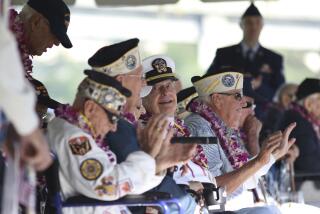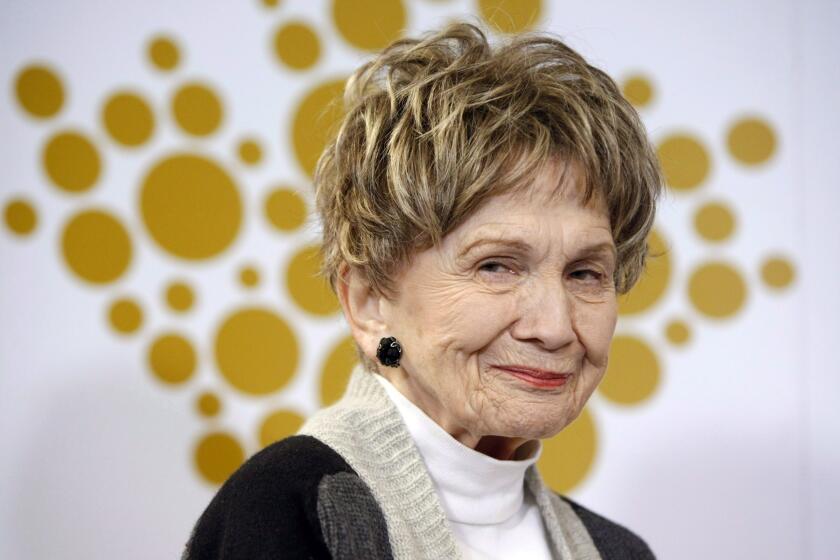Books on the Pearl Harbor attack and its aftermath for kids and teens
On Dec. 7, the United States will observe the 75th anniversary of the Japanese bombing of Pearl Harbor, in which more than 2,400 Americans were killed and 1,200 wounded.
The following day, President Franklin Roosevelt asked Congress to declare war on Japan. Brewing anti-Japanese sentiments boiled over, leading to the appalling decision to detain 120,000 Japanese Americans in internment camps. Most were native-born American citizens, imprisoned within their own country in hastily built camps surrounded by barbed wire and guarded by soldiers with machine guns.
For teens and tweens, something that happened before they or their parents were born, maybe even before their grandparents were born, can seem like ancient history. But at a moment when America feels increasingly divided by “othering” and discrimination, a deeper understanding of our own history may help to avoid the repetition of mistakes. This selection of books about Pearl Harbor and Japanese American internment is aimed squarely at youth, and a mix of nonfiction, memoirs and historical fiction for middle grade readers (age 8-12) and for teens, also called YA.
In “What Was Pearl Harbor?” (2013) Patricia Brennan Demuth neatly lays out the facts starting with the lead-up to the war in Europe and ending with the dropping of atomic bombs on Hiroshima and Nagasaki. Its tried and true format of short chapters, illustrations and text boxes keeps even reluctant readers engaged.
“My Friend the Enemy” (2007) by J.B. Cheaney is a middle grade novel set in Oregon in 1944. Eleven-year-old Hazel discovers that her neighbors have been sheltering 15-year-old Sogoji, a Japanese American boy who evaded internment. Hazel struggles to reconcile her growing friendship with Sogoji with her anti-Japanese sentiment.
“A Boy at War: A Novel of Pearl Harbor” (2002) is the first in the Adam Pelko trilogy written by World War II veteran Harry Mazer. In it, 14-year-old Adam is fishing off the coast of Hawaii with his Japanese American friend Davi when Pearl Harbor is attacked. Adam’s father is a Navy lieutenant and his ship, the USS Arizona, is sunk before Adam’s eyes.
Mary Matsuda Gruenewald grew up on a strawberry farm on Vashon Island, a 15-minute ferry ride from Seattle. Her memoir, “Looking Like the Enemy” (The Young Readers Edition, 2011), starts when Matsuda Gruenewald was 16 and Pearl Harbor was bombed, and recounts the family’s struggle to make do as they are evacuated to Pinedale “Assembly Center” and their world falls apart.
Jeanne Wakatsuki Houston was 7 years old when she was forced from her home in Los Angeles into a room shared with seven others in a tar-papered barrack. Twenty-five years passed before she felt ready to talk openly about her experience at Manzanar, the first permanent internment camp to open in the U.S. Originally published in 1973, “Farewell to Manzanar,” co-written with her husband, James D. Houston, is a classic that can still be found in bookstores.
“Eyes of the Emperor” (2005) by Graham Salisbury is a YA novel about Eddy Okana, who enlists in Honolulu seven weeks before the Pearl Harbor attack. His tale is based on the true story of 25 Japanese American soldiers who were sent from Hawaii to an island off the coast of Mississippi in an attempt to train dogs to attack Japanese soldiers—by turning Japanese American soldiers into dog bait. This is the second in the four-book Prisoners of the Empire series, which shows readers the bombing of Pearl Harbor and its aftermath through the eyes of Japanese American protagonists.
Yoshiko Uchida’s journey took her from a comfortable upbringing in Berkeley to internment in a horse stall at Tanoforan racetrack, and eventually on to the Topaz internment camp in Utah. Uchida first published her story in 1982’s “Desert Exile: The Uprooting of a Japanese American Family,” then adapted it for middle grade readers in “The Invisible Thread” (1991).
“Hotel on the Corner of Bitter and Sweet” (2009) by Jamie Ford was not written for the YA market, but its story of friendship and love between Chinese American Henry and Japanese American Keiko in Seattle’s International District (known back then as Chinatown and Japantown), will appeal to readers of thoughtful YA romances.
The latest addition to the canon of books about America’s internment camps is “Uprooted: The Japanese American Experience During World War II,” written by Albert Marrin and published in October. Marrin’s work highlights aspects of the Japanese American experience not often detailed in other books, including the Yankee Samurai — Japanese American citizens who were granted “honorary white” status so they could enlist with the U.S. military—and acts of resistance, such as the refusal to sign papers swearing loyalty to the U.S. Marrin, a National Book Award finalist for his other histories for adolescents, writes that this shameful chapter in U.S. history “shows that freedom is not free, and democracies do not automatically live up to their declared ideals.”
Robertson is a writer native to Seattle and currently living in Beirut.
More to Read
Sign up for our Book Club newsletter
Get the latest news, events and more from the Los Angeles Times Book Club, and help us get L.A. reading and talking.
You may occasionally receive promotional content from the Los Angeles Times.










